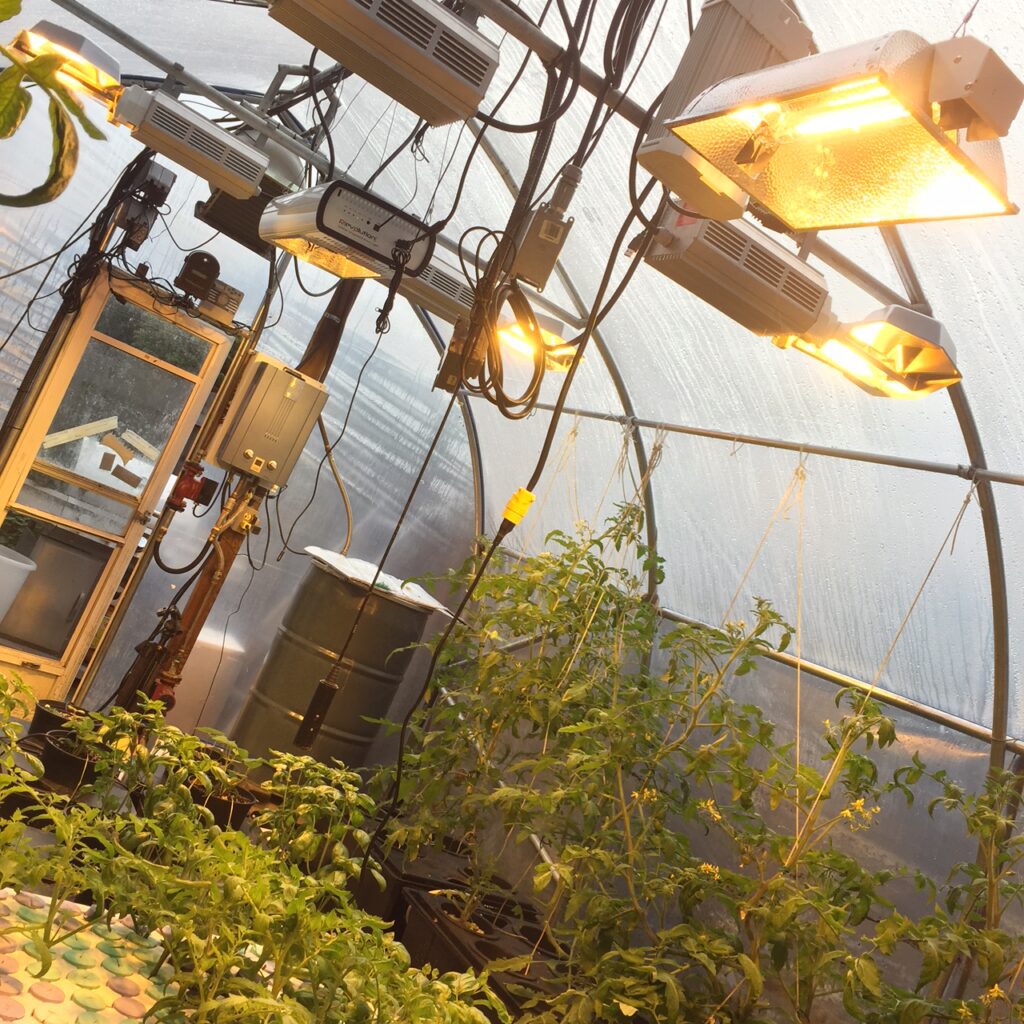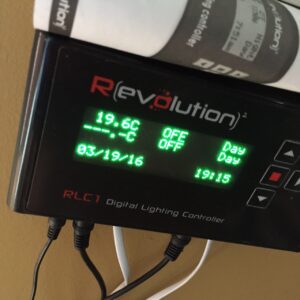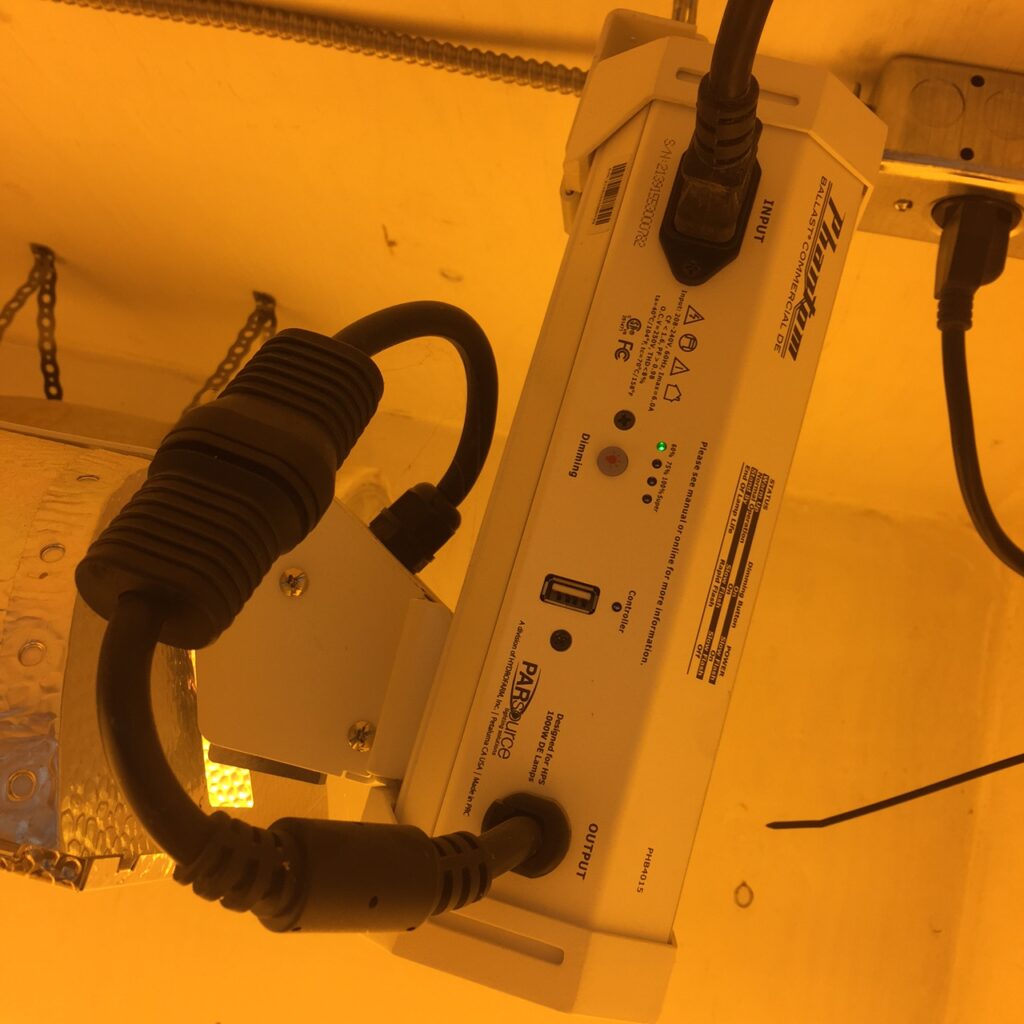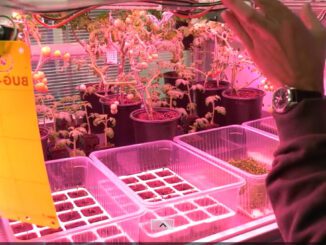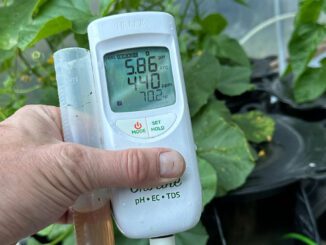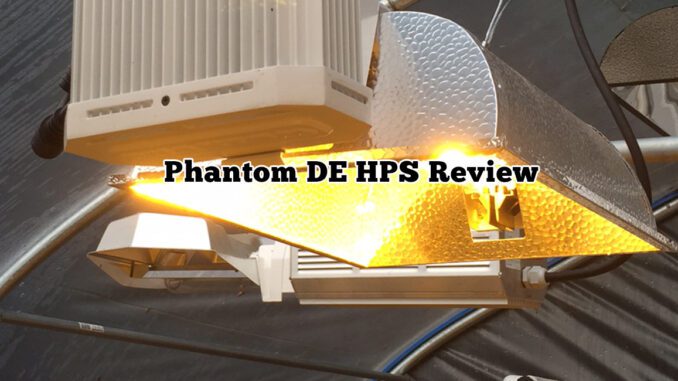
Phantom DE HPS Review
Phantom HPS Ballast & Bulb Lumiere Greenhouse & Indoor Garden Testing
+Smart Grow Lighting Tips to Save You Power
Our Grozine Phantom DE HPS Review was conducted over nine months in both Greenhouse and Indoor Garden settings under real world conditions. We tested the plant growth lighting fixture as a plug and play complete unit, i.e. Lumiere. However, note that the main ballast electronic component: “1000 Watt – Phantom Double-Ended Digital Ballast – Dimmable – USB Control Port – 208-240 Volt” operates DE (Double Ended) HPS lamps in a variety of remote fixtures.
This makes The Phantom one of the only “smart” E-Type Ballasts available that can do this, i.e. have ballasts outside of the grow room and use smart electronic lighting controls like the RLC-1 by Revolution Micro Electronics to operate DE HPS lamps and inside the grow room while using temperature controlled dimming, sunrise/sunset soft starts, high temperature shut down and other intelligent features.
Remote ballasts reduce heat inside the grow room, which can mean significant savings in cooling requirements. This also allows ballasts to be installed, operated and serviced in a centralized area and at ground level.
NOTE you can control over 500 fixtures from just one RLC-1 smart controller, using two independent zones. LEARN MORE HERE.
General Notes on The Phantom DE E-Type Lumiere
- We really like and admire the fact that the ballast and included fixture and lamp could be operated remotely using an optional length of lamp cord extension. Our package included everything to operate as complete fixture out of the box.
- Has more than one option available for use as a “smart” controlled ballast–so not forced to use only one type of controller, i.e. one that requires you to buy several of the exact same model because of limitation re number of fixtures. We happen to like the RLC-1 for value.
- Comes from a well known manufacturer with lots of experience, so we can expect a level of after market support, if required.
[ml-adverts location=home-page-content-banner-8]
Setting Up
While very light weight and shipped complete, the only grumble we have in this entire review stems from the reflector to ballast connection for operation as a one piece grow light fixture (lumiere). We found it difficult to secure and the connection to be too loose for our satisfaction. However, in some level of fairness, we should say that this model can be operated as a remote unit–so maybe we need to expect a little wiggle versus “lumiere only” operating models in our Phantom DE HPS Review.
Operation in the Greenhouse
The fact that the ballasts and cord connections are well sealed inspires confidence for safe and reliable greenhouse applications where interior drip may occur occasionally.
We tested the unit as an E-Type ballast using the RLC-1 control (and another make of DE fixture-talk about flexibility). E-Type ballasts use special connections to perform smart functions. For example, we have lighting (and electrical) levels ramp up and down gradually using the sunrise/sunset programming. The units were also programmed to dim at increasing temperatures, i.e. our cooling system wasn’t cutting the mustard or when sunlight became very strong, heating up the greenhouse. As a failsafe, the high temperature shutdown function was also set.
Under regular greenhouse conditions, the fixture performed very reliably. Never an issue. Turned ON and OFF as programmed to, and appeared to provide very bright supplemental lighting with good coverage. The fixture was installed about eight feet above grade in our test greenhouse.
As supplemental lighting for high light flowering and fruiting plants, we can say it appears ideal for covering eight feet by eight feet to ten feet by ten feet at a mounting height of eight to ten feet above grade.
Indoor Garden Applications
The indoor test garden operated the fixture without using a smart controller, i.e. fixture was plugged into an existing lighting system. The indoor garden was great for testing the different output levels via manual dimming. Temperature in the indoor test garden is never a problem with modern cooling and high temperature shut down capabilities already in play. However, power savings is critical because indoors grow lights are the only source of crop lighting versus supplemental greenhouse lighting where coverage area is significantly greater.
Indoor Growing Tip: The dimming function allows the units to be placed closer to plants when they are smaller, i.e. crowding many small plants around the fixture and operating at 60% output (and electrical consumption for lighting). As the plants increase in size and get spread apart, the output from the fixture is increased while the fixture height is raised to provide more coverage area while further increasing lighting intensity for more aggressive plant development.
Again, rock solid reliability and strong light levels characterized the performance of our Phantom DE Test Fixture–a wide variety of plants and strains appear to do very well in both veg and flower with the included lamps rated at a PAR output of 2100 µmol.
[ml-adverts location=home-page-content-banner-3]
How Bright?
Look, fact is once you get up to a certain standard of quality in DE HPS Lighting Fixtures, the performance in terms of lighting intensity differs negligibly from brand to brand. Independent lighting lab tests prove this, here’s an example:
However, our indoor test garden uses basic lux meters to maintain intensities of HPS lighting known to be optimal at the plant canopy. The only real challenge in delivering lighting indoors with high qualityDE fixtures is running out of ceiling height. At maximum output high quality DE fixtures deliver light so intense that you need at least three and a half feet from the tops of your plants. This makes another great case for going with a remote fixture, like this one HERE.
TIP: Remote fixtures can help shave some of the height required for the fixture while still operating safely–more plant material in the same space for better yields.
Additional Notes in Our Phantom DE HPS Review
Running the temperature probe cord from the controller and connecting all of the fixtures via USB to phone cord to controller does add some additional labor and expense–but not expecting all of this control to come without a little extra work or expense would be naive on our parts.
Final GZ Test Rating: 4/5

